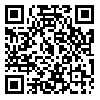Volume 21, Issue 6 (June 2021)
Modares Mechanical Engineering 2021, 21(6): 389-402 |
Back to browse issues page
Download citation:
BibTeX | RIS | EndNote | Medlars | ProCite | Reference Manager | RefWorks
Send citation to:



BibTeX | RIS | EndNote | Medlars | ProCite | Reference Manager | RefWorks
Send citation to:
Pordel A, Kazemi nasrabadi M, Moetakef-Imani B. Simulation of Surface Profile in Internal Turning Using Acceleration Signal and Tool Insert Geometry Modelling. Modares Mechanical Engineering 2021; 21 (6) :389-402
URL: http://mme.modares.ac.ir/article-15-28106-en.html
URL: http://mme.modares.ac.ir/article-15-28106-en.html
1- Student in Ferdowsi University of Mashhad
2- Assistant Professor at University of Shahid Sattari
3- Professor at Ferdowsi University of Mashhad , imani@um.ac.ir
2- Assistant Professor at University of Shahid Sattari
3- Professor at Ferdowsi University of Mashhad , imani@um.ac.ir
Abstract: (1556 Views)
Although there have been several research work published in the field of simulating and predicting the surface roughness of machining processes, most of them are limited to turning and milling operations. A few number of studies concerning the internal turning processes is very limited. Furthermore, the existing publications in this field have implemented statistical approaches which not only clearly lack in generality, but also require a huge amount of experiments. In the current research, the simulation of surface roughness has been investigated by using kinematics and dynamics of the process. Despite the numerous applications of this approach in turning operations, this approach has not applied in the internal turning processes. In order to implement the proposed approach, firstly the insert nose profile of the tool has been measured. Then, the surface profile consisting the periodical component of feed marks has been constructed. In the next step, excessive amount of vibrations imposed by the long boring bar have been measured by an accelerometer, which are then converted to displacements and added to the periodical component of the roughness profile. Results obtained from internal turning experiments show that the developed simulation approach has a maximum error of 19.3% in estimating roughness parameters which can be considered as a reasonably accurate results due to the complicated nature of surface roughness.
Article Type: Original Research |
Subject:
Design and manufacture by computer
Received: 2018/12/12 | Accepted: 2021/02/12 | Published: 2021/05/31
Received: 2018/12/12 | Accepted: 2021/02/12 | Published: 2021/05/31
Send email to the article author
| Rights and permissions | |
 |
This work is licensed under a Creative Commons Attribution-NonCommercial 4.0 International License. |







